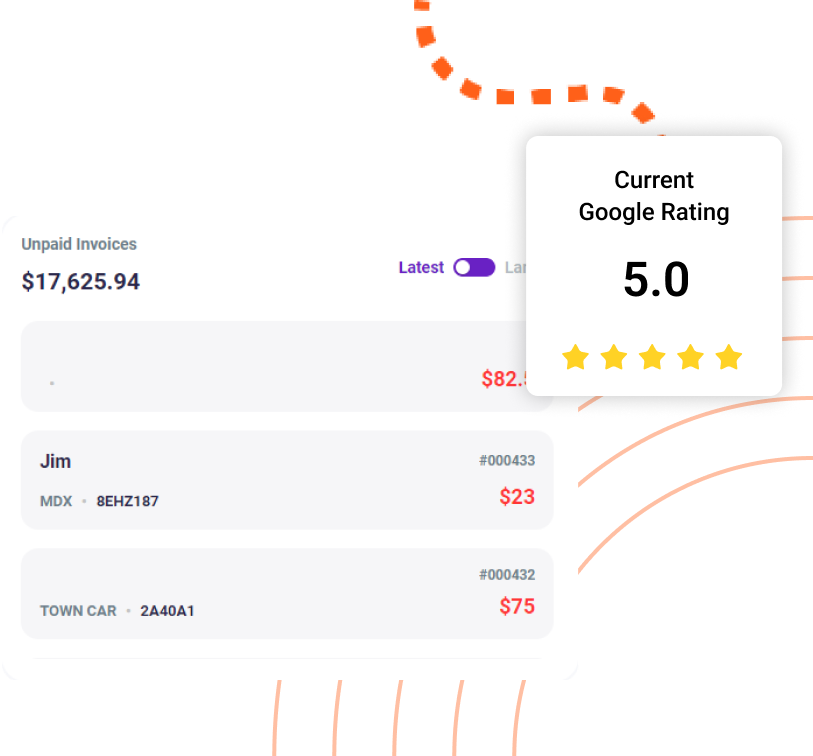Jeep wheel alignment is a common service provided by auto repair shops.
Ensuring precise and efficient alignment is essential, especially when time is a factor. To streamline the process, I’ve compiled seven invaluable tips that will assist you in achieving optimal Jeep wheel alignment swiftly and effectively.
Want to grow your auto repair shop? Book a personalized demo now
Understanding Jeep Wheel Alignment
Understanding Wheel Alignment is crucial for maintaining a Jeep’s performance and safety.
Wheel alignment refers to the precise adjustment of the three key angles:
- camber (the tilt of the wheels inward or outward)
- toe (the angle of the wheels pointing inwards or outwards)
- caster (the angle of the steering pivot).
These angles must be set within manufacturer specifications to ensure even tire wear and proper vehicle handling.
In a Jeep, specific alignment considerations are essential due to its unique suspension and four-wheel-drive system, which can impact alignment settings differently from other vehicles. Mastering these principles is fundamental for any Jeep owner to maximize their vehicle’s potential.
Signs of Misaligned Wheels in a Jeep
Detecting misaligned wheels in a Jeep is crucial to ensure optimal performance and safety.
Common symptoms of misalignment include:
- uneven tire wear
- a pulling sensation while driving
- steering wheel off-center
- vehicle veering to one side
Misalignment can significantly impact a Jeep’s performance, affecting its handling, stability, and fuel efficiency.
Pre-Alignment Preparations
Gathering the Right Tools and Equipment
Before embarking on a Jeep wheel alignment, it’s essential to have the right tools and equipment in place. These tools play a crucial role in ensuring accurate and effective alignment:
- Alignment Rack or Stands: Invest in a quality alignment rack or stands designed for your Jeep. These provide a stable platform for alignment adjustments.
- Laser Alignment Tools: Laser alignment tools help you precisely measure and adjust the alignment angles of your Jeep’s wheels.
- Wheel Clamps: Wheel clamps secure the wheels in place during the alignment process, preventing any movement that could skew the results.
- Alignment Charts: Alignment charts provide specific alignment specifications for your Jeep model, guiding you in making the necessary adjustments.
Jeep Wheel Alignment Cost
The cost of aligning your Jeep can vary based on several factors. It’s essential to consider these factors when budgeting for alignment services:
- Location: Alignment costs can differ significantly by location due to varying labor rates and living costs.
- Alignment Type: Whether you opt for a 2-wheel or 4-wheel alignment will impact the overall cost.
- Alignment Shop Rates: Different alignment shops may have varying rates for their services.
On average, Jeep alignment costs range from $50 to $150. However, significant savings can be achieved by performing a DIY alignment, especially if you have the necessary tools and expertise.
How Often Does a Jeep Need an Alignment?
It’s generally recommended to check your Jeep’s alignment every 6,000 to 8,000 miles or as specified in your vehicle’s manual.
Several factors may necessitate more frequent alignments, including:
- rough driving conditions
- off-road adventures
- encounters with potholes
The 7 Expert Tips for Effective Jeep Wheel Alignment
Proper jeep wheel alignment is paramount for maintaining your Jeep’s performance, tire longevity, and overall safety. To achieve this, consider these seven expert tips that encompass equipment, maintenance, and professional guidance:
Tip 1: Invest in Quality Alignment Equipment
High-quality tools ensure precision, accuracy, and reliability throughout the process.
Quality tools offer:
- Precise measurements: Accurate jeep wheel alignment angles are essential to avoid premature tire wear and improve handling.
- Durability: Quality tools are built to last, providing long-term value and consistency.
- Ease of use: Properly designed tools simplify the alignment process, reducing the chances of errors.
Some reputable brands known for their alignment equipment include Hunter Engineering, Snap-on, and John Bean. Research and choose the specific tools that align with your Jeep model and alignment needs.
Tip 2: Check and Adjust Tire Pressure
Tire pressure plays a crucial role in jeep wheel alignment. Incorrectly inflated tires can lead to misalignment issues.
Low tire pressure can cause excessive wear on the outer edges of the tires (positive camber), while high pressure can result in excessive wear on the inner edges (negative camber). These imbalances affect the vehicle’s handling and fuel efficiency.
To maintain the right tire pressure:
- Consult your Jeep’s manual or the sticker inside the driver’s door for recommended tire pressure values.
- Use a quality tire pressure gauge to check each tire’s pressure when they are cold (not driven for a few hours).
- Adjust the tire pressure to match the manufacturer’s recommendations.
- Regularly checking and maintaining proper tire pressure not only promotes better alignment but also enhances tire life and overall safety.
Tip 3: Inspect and Replace Worn Suspension Components
Worn suspension components can wreak havoc on your Jeep wheel alignment. Common signs of wear include:
- Uneven tire wear patterns.
- Vehicle pulling to one side.
- Steering wheel off-center.
- Excessive vibration or noise.
Suspension components that frequently require attention include:
- Control arms and bushings.
- Ball joints.
- Tie rods.
- Shocks and struts.
When you notice these signs or suspect worn suspension parts, it’s crucial to address them promptly:
- Consult your vehicle’s manual or a trusted mechanic for guidance on identifying the specific worn components.
- Replace or repair the affected parts with high-quality, OEM (Original Equipment Manufacturer) or reputable aftermarket components.
- Ensure that the new components are properly installed and torqued to manufacturer specifications.
- Replacing worn suspension parts not only contributes to better jeep wheel alignment but also enhances your Jeep’s overall handling and ride comfort.
Tip 4: Follow Manufacturer Specifications
Jeep-specific alignment specifications provided by the manufacturer are essential for achieving optimal alignment.
Access your Jeep’s alignment specifications through the owner’s manual, service manual, or online resources provided by the manufacturer.
These documents outline the recommended alignment angles for your specific model. Interpret these values and use them as a reference when performing your alignment, ensuring that your Jeep is in alignment with the manufacturer’s intent.
Tip 5: Conduct a Test Drive
After aligning your Jeep’s wheels, a test drive is essential to validate the quality of the alignment job. It allows you to assess how your Jeep handles and performs under real-world conditions.
Pay attention to the following factors during the test drive:
- Steering response: Ensure the steering wheel is centered and that the vehicle tracks straight without drifting.
- Vehicle stability: Check for any pulling to one side or vibrations.
- Tire wear: Monitor tire wear patterns for any signs of uneven wear.
- Braking performance: Assess the effectiveness of your brakes, ensuring that the vehicle stops smoothly and straight.
- If you notice any issues during the test drive, revisit your alignment work to make necessary adjustments.
Tip 6: Utilize Advanced Alignment Software
In addition to traditional alignment tools, consider incorporating advanced alignment software into your alignment process. This software, often used by professional mechanics, provides real-time data and visual aids to enhance alignment accuracy.
Alignment software offers several advantages:
- Real-time adjustments: Monitor alignment angles as you make changes, ensuring precise alignment.
- Visual guides: Graphical representations help you align wheels to the exact specifications, reducing errors.
- Historical data: Track alignment history and compare previous settings to ensure consistency.
By using alignment software, mechanics can fine-tune alignment angles with greater precision, making it a valuable tool for achieving optimal alignment results.
If you’re in search of comprehensive automotive software solutions, look no further than Torque360. Don’t miss the opportunity to explore its full range of features and capabilities – book a demo today to discover how it can elevate your automotive experience.
Tip 7: Regular Maintenance and Checks
Maintaining proper jeep wheel alignment is an ongoing process. Regularly inspect your Jeep’s alignment and suspension components for signs of wear or damage. Address any issues promptly to prevent further problems.
As a general guideline, consider checking your Jeep’s alignment every 6,000 to 8,000 miles or whenever you notice symptoms of misalignment. However, specific driving conditions, such as off-roading or frequently encountering rough terrain, may require more frequent alignment checks. Establish a maintenance schedule that suits your Jeep’s needs to ensure long-lasting alignment and optimal performance.
What Happens If Your Wheel Alignment Is Off?
When your jeep wheel alignment is off, it can lead to a range of issues for your vehicle.
Firstly, misaligned wheels can cause uneven tire wear. This means that certain parts of your tires will wear down faster than others, reducing their lifespan and requiring more frequent replacements.
Additionally, misalignment can lead to poor handling and decreased fuel efficiency. Your vehicle may pull to one side, making it harder to maintain a straight course and potentially affecting your ability to control the car.
Different Types of Wheel Alignment Options
When it comes to wheel alignment, there are several options to consider:
Two-Wheel vs. Four-Wheel Alignment:
Two-wheel alignment focuses on aligning the front wheels, which is suitable for vehicles with a solid rear axle. In contrast, four-wheel alignment aligns all four wheels independently and is common for vehicles with independent rear suspension. For most modern Jeeps and vehicles, a four-wheel alignment is recommended to ensure all wheels are properly aligned for better handling and tire wear.
Front-End vs. Thrust Angle Alignment:
Front-end alignment primarily addresses the front wheels’ angles, including camber, toe, and caster. Thrust angle alignment, on the other hand, considers the rear wheels’ alignment in relation to the vehicle’s centerline. Thrust angle alignment is crucial when the rear axle isn’t square with the front axle, ensuring that all four wheels are properly aligned and pointing in the same direction.
FAQs:
Yes, a Jeep Wrangler typically benefits from a 4-wheel alignment. The reason is that most Jeep Wranglers have a front and rear solid axle design, and each axle requires its own alignment. Proper jeep wheel alignment of all four wheels ensures even tire wear, better handling, and optimal performance. A 4-wheel alignment helps maintain the Jeep’s stability and handling, especially if you frequently drive off-road or encounter rough terrain.
The type of alignment your car needs depends on its suspension design. If your vehicle has a solid rear axle (typically found in older trucks and some SUVs), a 2-wheel alignment that focuses on the front wheels may suffice. However, if your vehicle has independent rear suspension (common in most modern cars and SUVs), a 4-wheel alignment is recommended to ensure all four wheels are properly aligned.
You can check for signs of misalignment by observing your vehicle’s behavior:
- Uneven tire wear: If your tires show signs of uneven wear, such as excessive wear on the inner or outer edges, it’s a strong indication of misalignment.
- Steering issues: If your steering wheel is off-center when driving straight or if your vehicle tends to pull to one side, your alignment may be off.
- Vehicle handling: Poor handling, instability, or vibrations while driving can also indicate alignment problems.
If you notice any of these symptoms, it’s advisable to have your alignment checked by a professional.
Conclusion:
In this blog, we have deeply explained all the things you need to know about jeep wheel alignment with 7 expert tips. It is best that you use the best tools in your auto repair shop.
If you need to learn about digital tools that can help you in your business, you should look for Torque360. It offers all-round automotive management software as well. It includes many features such as scheduling, invoicing, estimating, digital vehicle inspection, repair order management, technician portal, POS integration, and marketing solutions.






